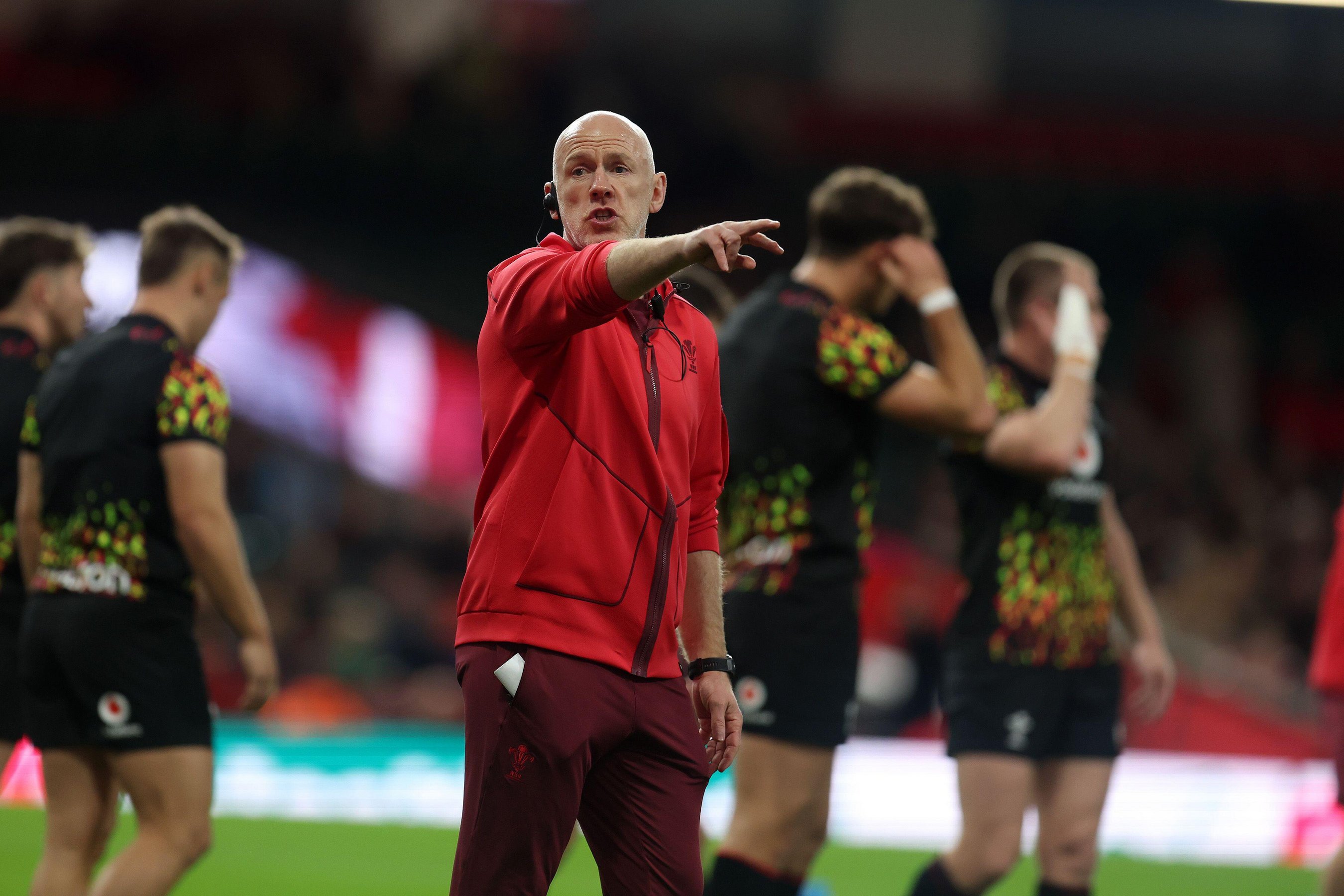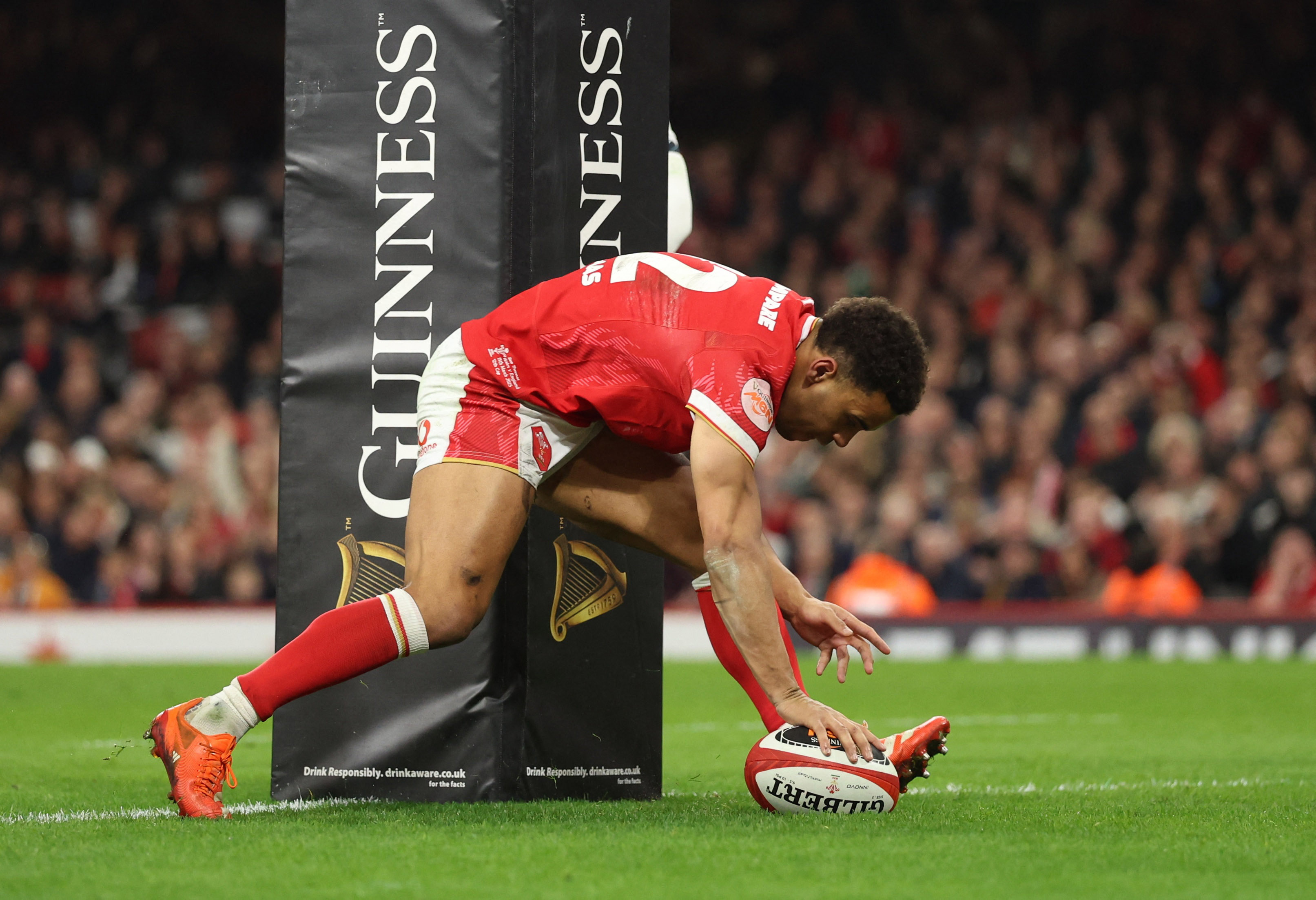“So, Steve, if you could please attend to those deckchairs over there, that would be great, thank you.” Harsh, yes, and a bit of a cheap gag, but the new Wales head coach Steve Tandy certainly faces a task of Titanic proportions as he ponders his first team selection for the visit of Argentina to Cardiff on Sunday.
Wales are ranked No12 in the world, and made hard work of beating Japan in the second Test last summer to end a horrendous 18-Test losing streak. The wider game in the country is in utter turmoil after the Welsh Rugby Union recently announced it is to cut the number of teams from four to three.
Look at the United Rugby Championship table and you instantly see very good reason for that decision. Cardiff are fourth but the other three Welsh regions, Scarlets, Dragons and Ospreys, occupy the bottom three places, with only one victory between them in 14 attempts. It is a dire situation.

Tandy takes over Wales with the national team and regions in disarray
ALAMY
By and large Tandy is having to choose from the same group of players as before. Louis Rees-Zammit has returned from his American football adventure to add glamour and gallop, the Saracens prop Rhys Carré is back through a cheeky loophole in the 25-cap regulations, and the centre Joe Hawkins, a casualty of those very same regulations at Exeter Chiefs, is at the Scarlets now and in the mix. But otherwise Tandy, impressive so far in his clarity and openness, is going to have to put his own significant slant on those available if he is to avoid the same results.
These are the questions he will answer with his first selection on Friday.
Back three: a return for Rees Lightning?
Blair Murray would seem nailed on at full back, while it is hoped that Rees-Zammit, who ran separately from the main squad at an open training session at the Principality Stadium last week, is fit after a toe problem suffered in early October. If he is, then it is a shoot-out between Josh Adams and Tom Rogers for the other wing spot, pitting the former’s experience, physicality and defensive work-rate against greater pace and aerial skills of the latter.
Centres: twin playmakers or midfield muscle?
This has been a long-running saga, not quite since Jamie Roberts and Jonathan Davies were in their pomp because Hadleigh Parkes was an excellent replacement for Roberts, and at the previous World Cup Nick Tompkins and George North worked well together. But the combinations have been many, and the solutions so very few.

Thomas was used as an inside centre earlier in the year
IAN WALTON/REUTERS
Matt Sherratt is the attack coach now but when he was interim head coach earlier this year he went with Ben Thomas as a second playmaker at inside centre. It would be a surprise if that were not the case again, but whether that is the answer moving forward is another matter. Thomas is a lovely footballer but there are some big beasts in Test-match midfields and you do worry about his size.
Tompkins is in the squad, as are Hawkins, Gloucester’s Max Llewellyn and Bath’s Louie Hennessey. Cardiff’s Jacob Beetham can play full back and centre.
Fly half: a shallow pool
How Tandy must wish to be in Steve Borthwick’s shoes, where England have three top-class No10s from which to choose. It says everything that, while I would not be picking George Ford now mainly because of his defensive frailties (and Fin Smith surely needs to be accumulating experience before the next World Cup), that part of his game is probably stronger than those of all three players chosen by Wales.
The rest of his game is miles ahead of Dan Edwards, Jarrod Evans or Callum Sheedy too, so, from the shallowest of pools, the likelihood is that Edwards, the youngest at 22, is given time to grow into the role.

Given his age, Edwards seems the most likely fly-half selection
GETTY
Scrum half: no debate needed
Tomos Williams. End of. Although he may want to focus a little more on his defensive work than he has to at his ultra-attacking club side, Gloucester. Kieran Hardy or Reuben Morgan-Williams as back-up is a trickier call.
Front five: where are the ball-carriers?
For so long the front five has been the crux of Wales’ problems, because without a solid set piece even the grandest and boldest of attacking ideas can flounder. Wales have also not exactly been flush with ball-carriers in this department either and, in truth, the expected second-row pairing of Dafydd Jenkins and Adam Beard do not contradict that statement.
The hooker Dewi Lake does, though, even if he should look to offload a little more. The return of Carré provides a man among the strongest of carriers, even if he could be deployed from the bench given Nicky Smith is such a good scrummager.
Tight-head prop remains a barren field. Archie Griffin, despite being down the plughole in the pecking order at Bath, will probably start.

Morgan is a world-class flanker and was part of the Lions squad in the summer alongside Maro Itoje, left
GETTY IMAGES
Back row: two shoo-ins, one question
The captain, Jac Morgan, will be at No7, of that we can be sure, and not just because he is the only specialist open-side flanker in the squad. He is world class. Aaron Wainwright will be starting, too, but where? He would have been at No6 had Taulupe Faletau been fit, but Faletau’s absence for the whole campaign raises some interesting possibilities.
Does Tandy go with Ospreys’ Morgan Morse or Leicester Tigers’ Olly Cracknell, both uncapped, at No8, and stick with Wainwright at No6? Or does he shift Wainwright to No8 and look at Alex Mann (who is the reserve No7 in extremis), Freddie Thomas or Taine Plumtree on the blind side?
Tandy has said that, more than anything else, he wants to reveal Wales’ new identity under his leadership this autumn, and so many of these calls — say, a ball-playing No12 or a big, physical No6 — will point us in the requisite direction.
Wales v Argentina
Autumn internationals, Cardiff
Sunday, 3.10pm
TV TNT Sports 1, BBC iPlayer, S4C

